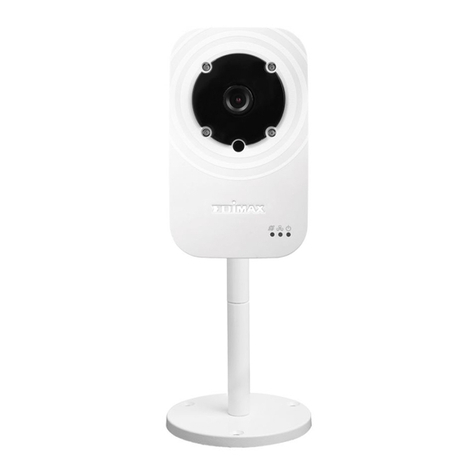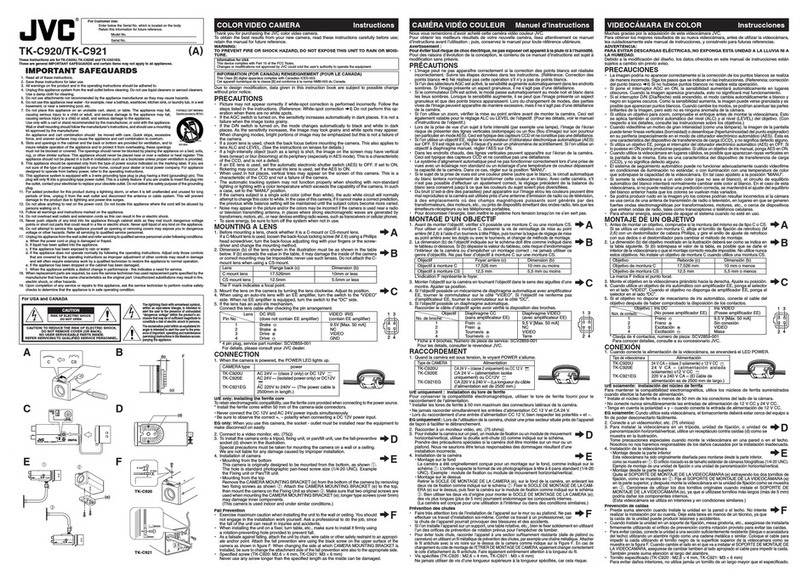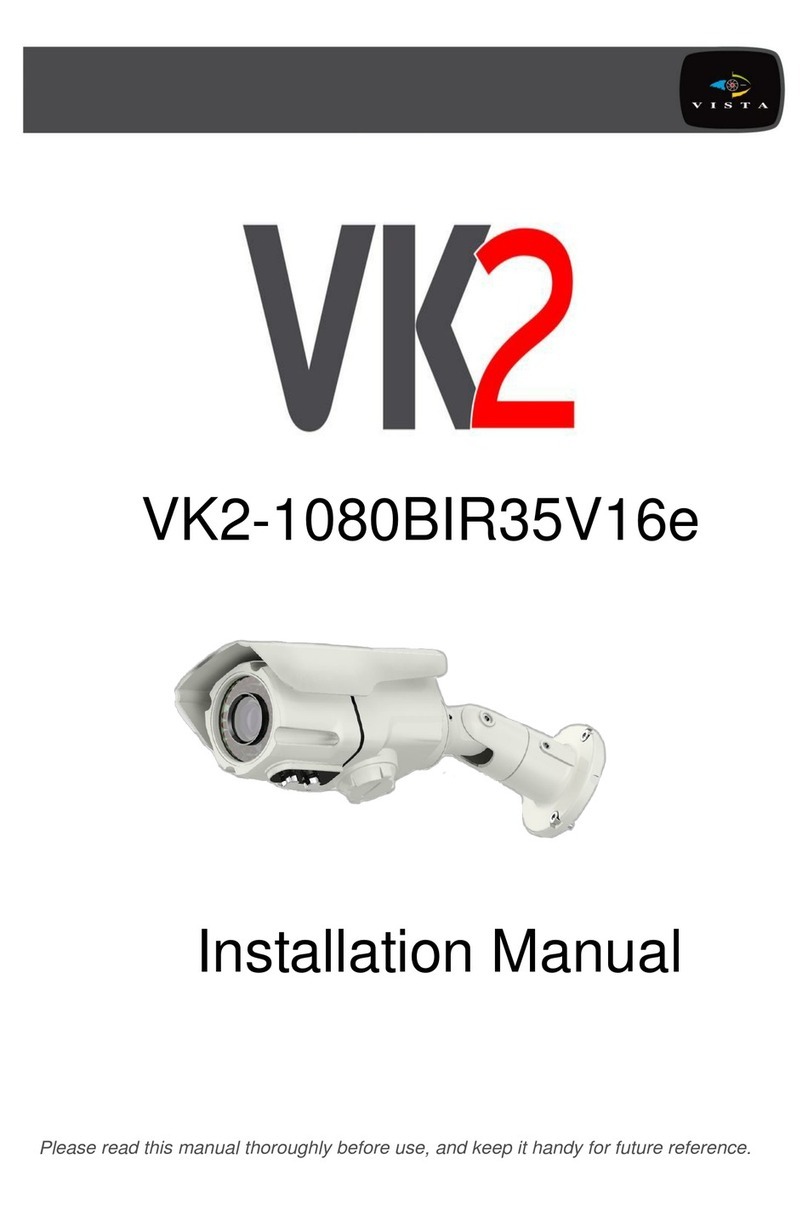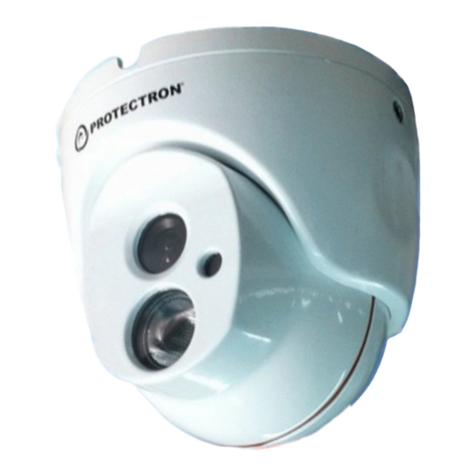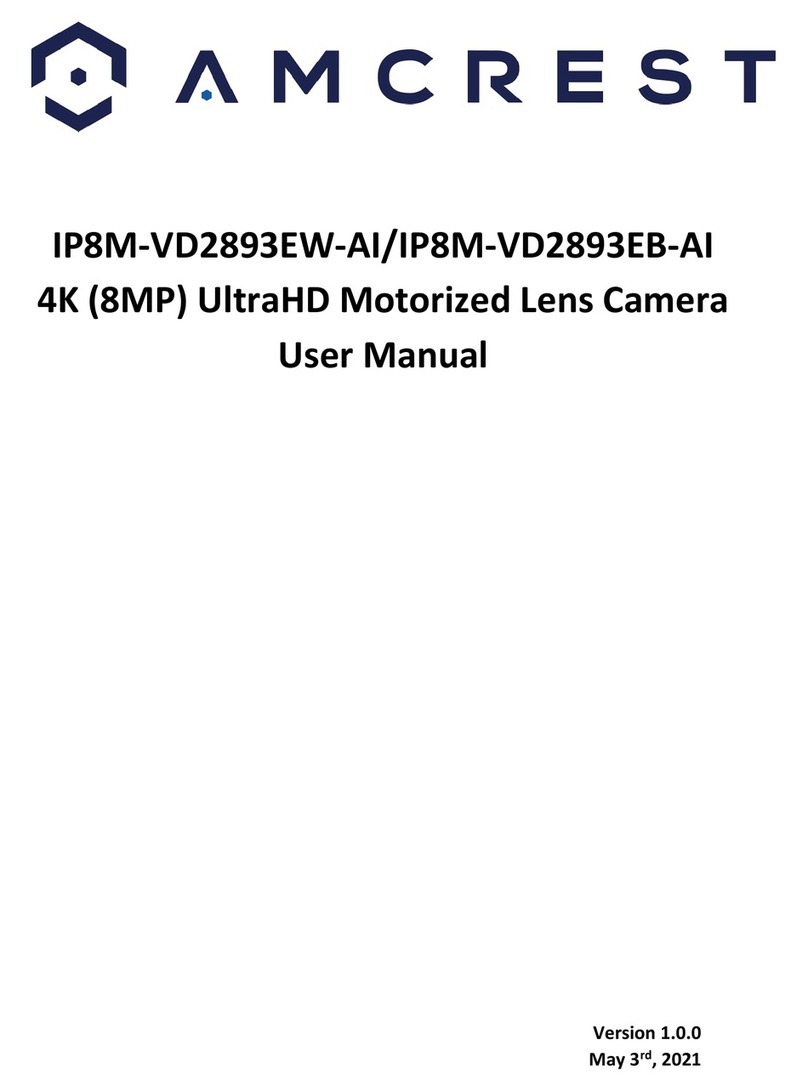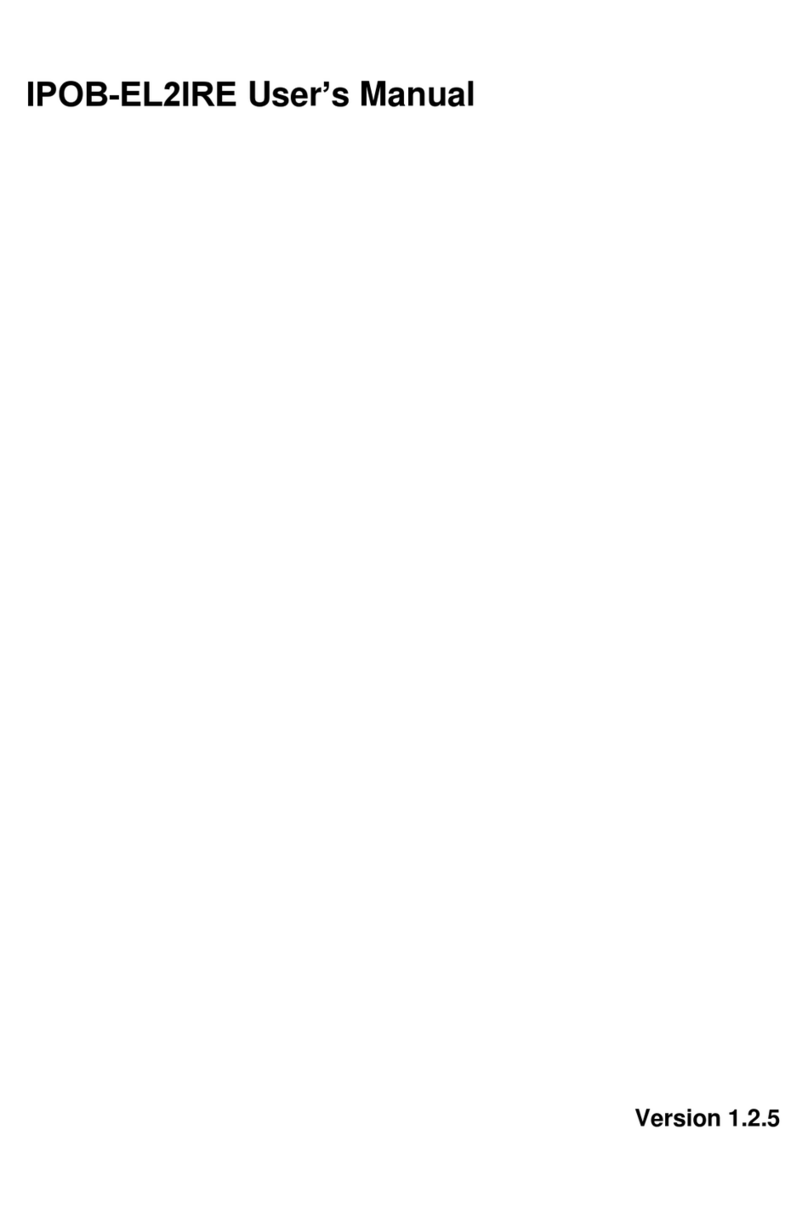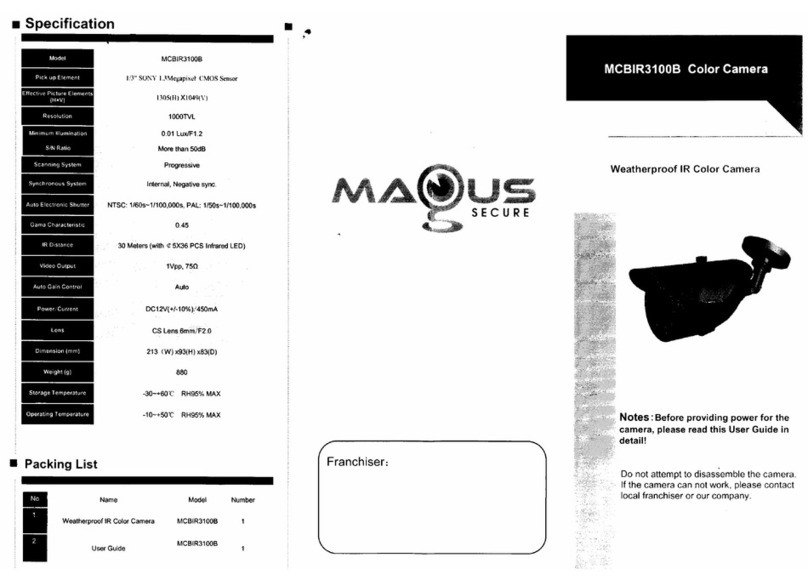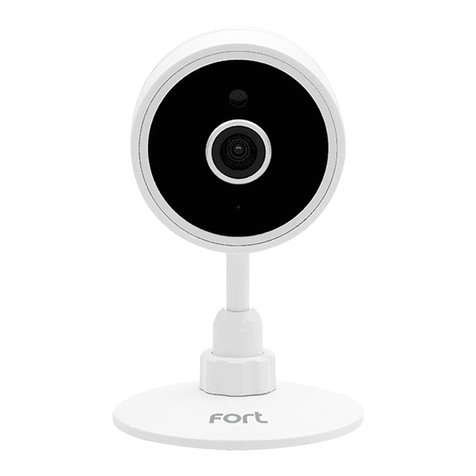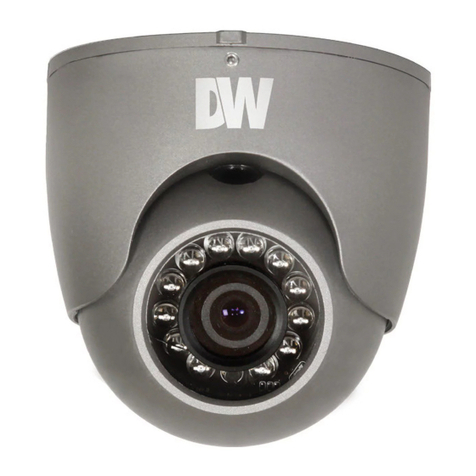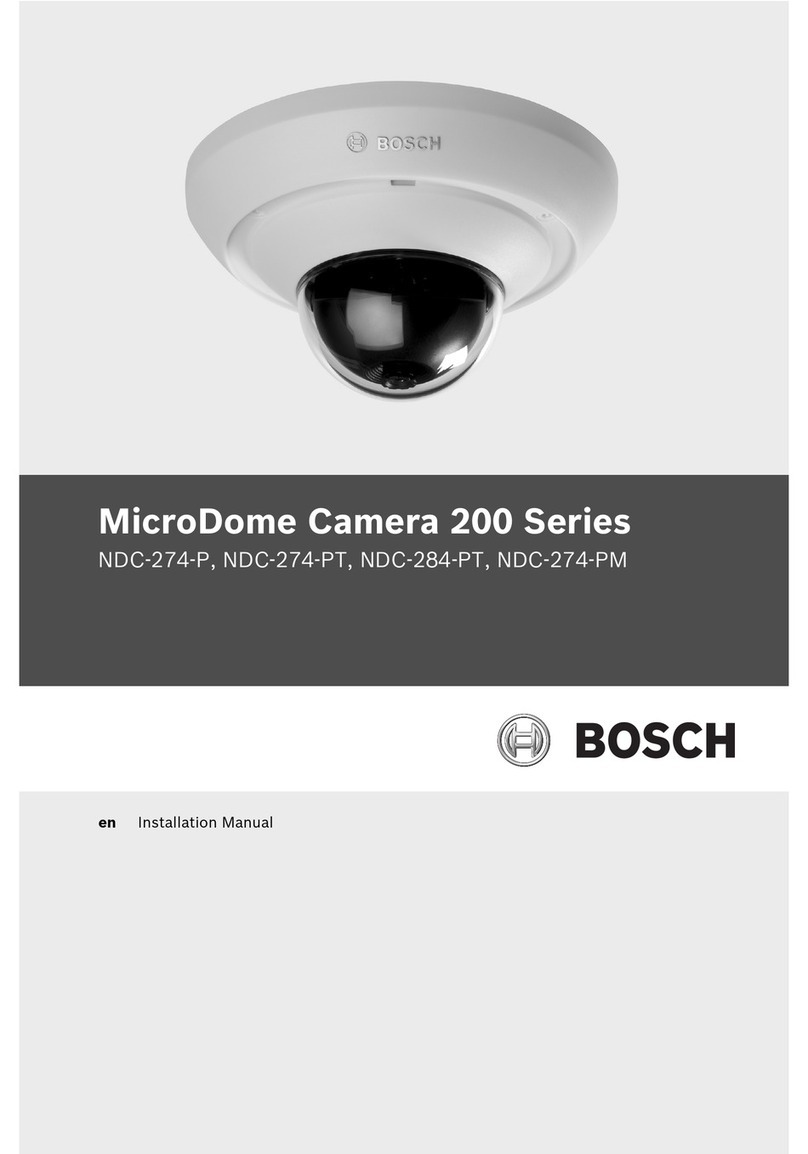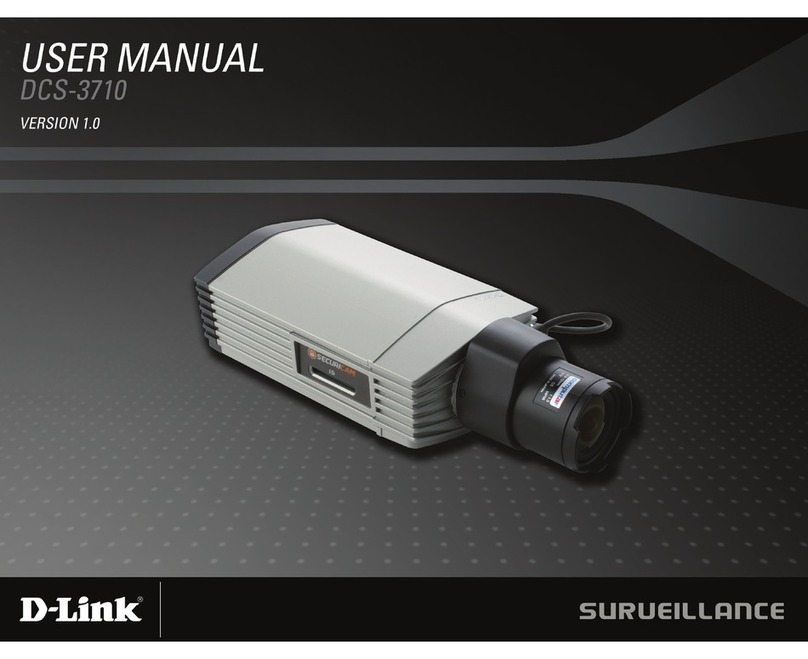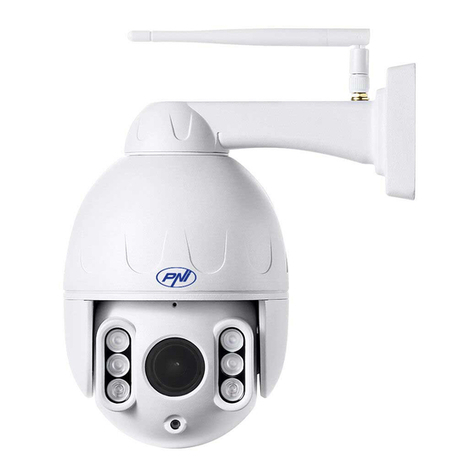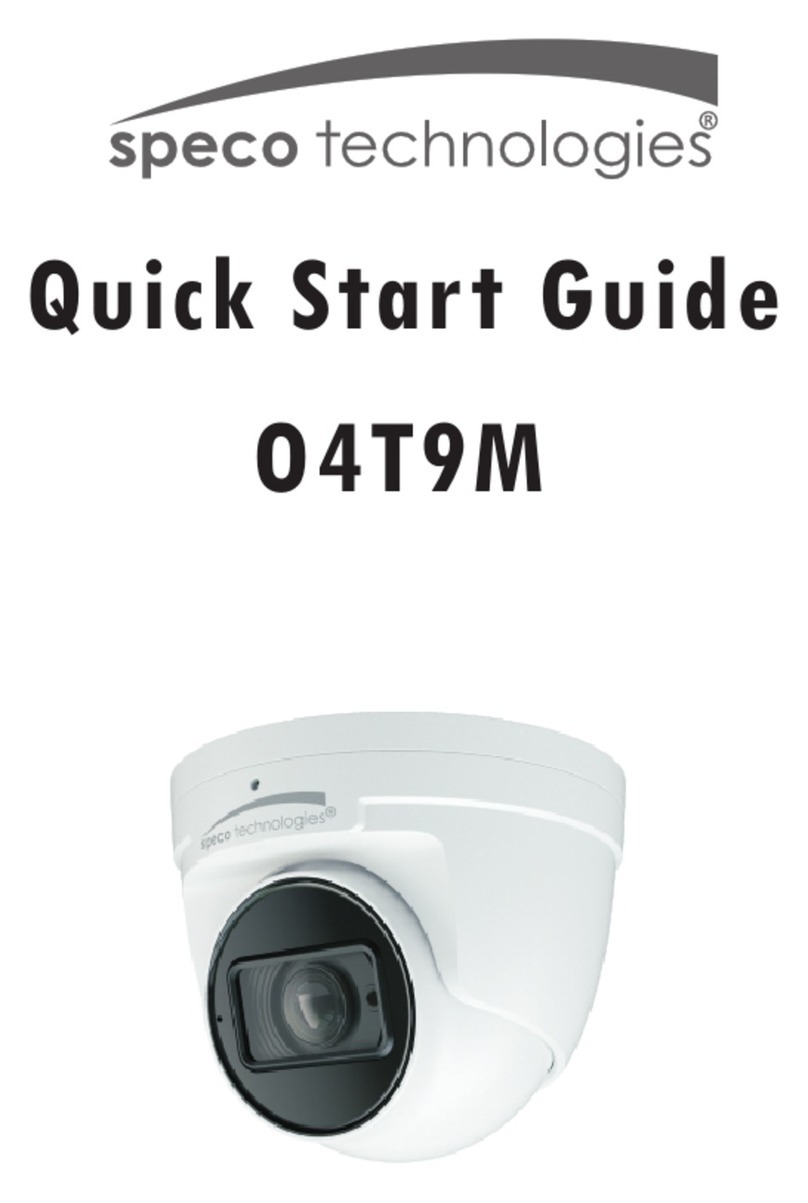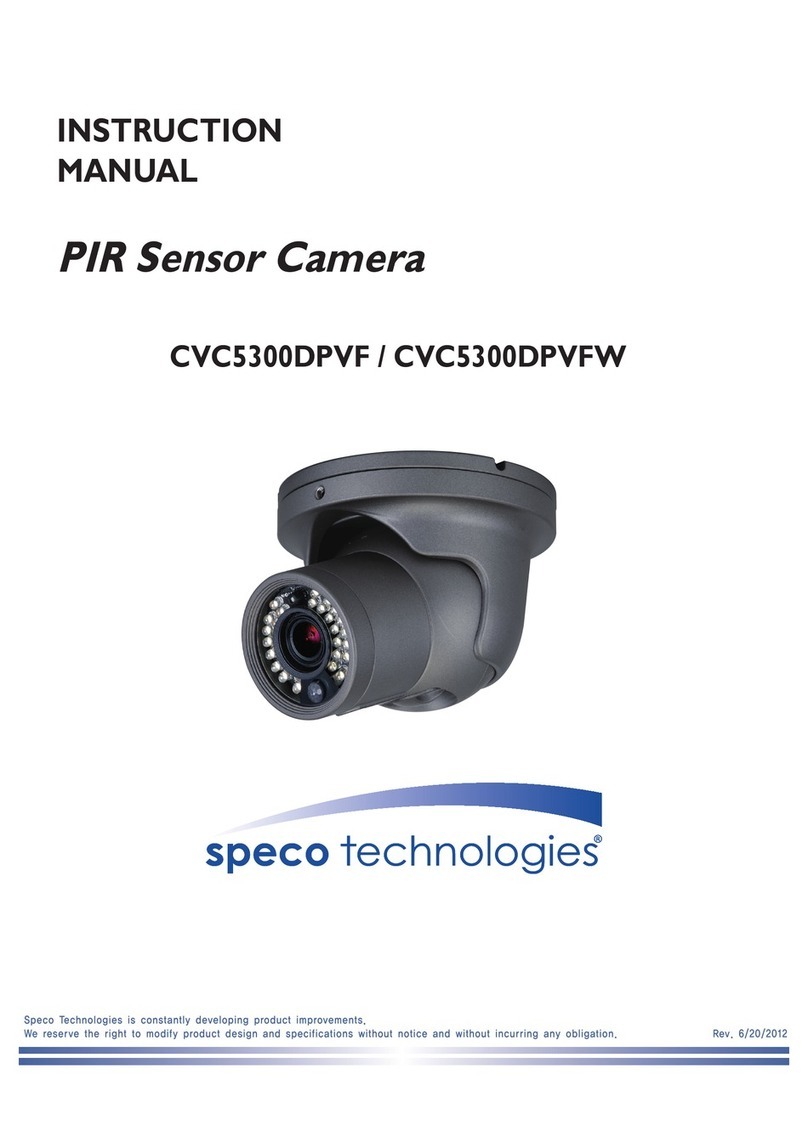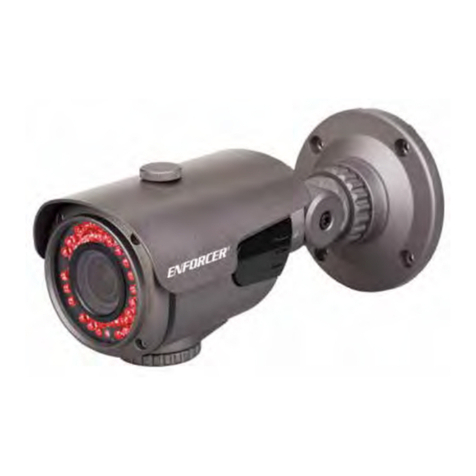Helios 3120HD Series User manual

HeliosTM Products
OPERATION MANUAL Series
3120HD
3720HD
3920HD\SD
3930HD
3960HD\SD
5970SD
8800HD
April 10, 2014
Technical Manual 6X-1090J www.CohuHD.com

6X-1090J2
Table of Contents
About this document 3
Additional information and documents related to the camera system 3
FCC compliance 3
Support services 3
Returns 4
1.0 Getting Started 5
1.1 Factory Default IP Address and Settings 5
1.2 System Requirements 5
1.3 Recommended Computer Specications 5
1.4 3960HD/3960SD/5970SD Interconnection Diagram 6
1.5 3930HD Interconnection Diagram 7
1.6 3920HD/3920SD Interconnection Diagram 9
1.7 3120HD/3720HD Interconnection Diagram 10
1.8 8800HD Interconnection Diagram 12
1.9 Assigning the Static IP Address 13
2.0 Accessing the Camera Using the Helios Web Interface 15
Assigning the New Camera IP Address 17
Using the CohuONVIFDiscovery Software to Discover the Camera 18
2.1 Helios Web Interface Home Page Overview 19
2.1.1 Video Control Area 20
2.1.2 Live Video Control 20
2.1.3 LED Indicators 20
2.1.4 On-Screen Display 20
2.2 Setup 21
2.2.1 Conguration 21
2.2.1.1 Communication 22
2.2.1.2 Stream 1 23
2.2.1.3 Stream 2 24
2.2.1.4 OSD (On-Screen Display) 26
2.2.1.5 Time 27
2.2.1.6 User Settings 28
2.2.2 Change Password 30
2.2.3 Properties 31
2.2.3.1 Properties (Applies to 3960HD/3960SD/3920HD/3920SD/3930HD/3720HD/3120HD) 31
2.2.3.2 Properties (Applies to 5970SD) 33
2.2.3.3 Properties (Applies to 8800HD) 38
2.2.4 Upgrade 40
2.2.4.1 Firmware Upgrade 41
2.2.4.2 Web Interface Upgrade 42
2.3 Stream 43
2.4 Lens 43
2.4.1 Lens (Applies to 3960HD/3960SD/3920HD/3920SD/3930HD/3720HD/3120HD/5970SD) 43
2.4.2 Lens (Applies to 8800HD) 43
2.5 Tours (Applies to 3960HD/3960SD/3920HD/3920SD/5970SD/3720HD/3120HD/8800HD) 45
2.6 Patterns (Applies to 3720HD/3120HD) 46
2.7 Presets (Applies to 3960HD/3960SD/3920HD/3920SD/5970SD/3720HD/8800HD/3120HD) 46
2.8 Park (Applies to 3960HD/3920HD/3720HD/3120HD) 47
2.9. Auxiliary 47
2.10 Sector (Applies to 3960HD/3960SD/3920HD/3920SD/5970SD/3120HD) 49
2.11 Privacy Zones (Applies to 3960HD/3960SD/3920HD/3920SD) 50
2.12 Back Focus (Applies to 8800HD) 51
2.13 Micro Nudge (Applies to 8800HD Camera Positioner System) 52
2.14 Event (Applies to 3960HD/3960SD/3920HD/3920SD/5970SD/3720HD/3930HD/8800HD/3120HD) 53
2.14.1 External I/O 53
2.14.2 FTP (File Transfer Protocol) and Email 54
2.14.3 Auxiliary 55
2.14.4 Event Actions 56
2.15 Privacy Mask (Applies to 3120HD/3930HD with 720p30x Zoom In) 57
Appendix 1: Region of Interest (ROI) 59
3.0 Warranty 60

3
6X-1090J
About this document
The Operation Manual is a combined document for the CohuHD™ Helios™ products and contains informa-
tion on how to congure and operate camera systems using Helios Web Interface for 3960HD/3960SD/3930HD/
3920HD/3920SD/3720HD/3120HD/8800HD series. The manual is available from the CohuHD website at:
http://www.CohuHD.com/Files/operation_manual/HeliosOperationManual.pdf
The information in this manual is subject to change without notice. Please refer to the above website for
the latest information.
NOTE: All graphics contained within this document, including screenshots and other displays, are for reference use
only and are subject to change.
Additional information and documents related to the camera system
For information on the installation and maintenance of the following camera positioner systems see:
• 3960HD, 3960SD , and 5970SD – see combined Installation Manual 6X-1089
• 3930HD – see Installation Manual 6X-1092
• 3920HD and 3920SD – see combined Installation Manual 6X-1097
• 3720HD – see Installation Manual 6X-1098 and Quick Start Guige 6X-1107
• 8800HD (Standalone and Camera Positioner Systems) – see combined Installation Manual 6X-1105
• 3120HD – see Installation Manual 6X-1109
Manuals are available from the CohuHD website on specic product pages.
Copyright/Intellectual Property Rights statement
Copyright 2014 by Cohu, Inc. Cohu, Inc. has intellectual property rights to technology embodied in the
product described in this manual.
CohuHDTM and HeliosTM are trademarks of Cohu, Inc.
FCC compliance
This equipment has been tested and found to comply with the limits for a Class A digital device pursuant
to Part 15 of the FCC Rules. These limits are designed to provide reasonable protection against harmful
interference when the equipment is operated in a commercial environment. This equipment generates,
uses, and can radiate radio frequency energy, and, if not installed and used in accordance with the instruc-
tion manual, may cause harmful interference to radio communications. Operation of this equipment in a
residential area is likely to cause harmful interference, in which case the user will be required to correct the
interference at his own expense.
This device complies with Part 15 of the FCC Rules. Operation is subject to the following two conditions:
(1) this device may not cause harmful interference, and (2) this device must accept any interference re-
ceived, including interference that may cause undesired operation. Changes or modications to this device
void the warranty.
Support services
Please contact the Customer Service Department for technical assistance.

6X-1090J4
Returns
This item was thoroughly tested and carefully packed at the factory prior to shipping. Upon acceptance by
the carrier, the carrier assumes responsibility for the item’s safe arrival. If you receive the item in a damaged
condition, apparent or concealed, a claim for damage must be made to the carrier.
If a visual inspection shows damage upon receipt of this shipment, it must be noted on the freight bill or
express receipt and the notation signed by the carrier’s agent. Failure to do this can result in the carrier
refusing to honor the claim.
When the damage is not apparent until the unit is unpacked, a claim for concealed damage must be made.
Make a mail or phone request to the carrier for inspection immediately upon discovery of the concealed
damage. Keep all cartons and packing materials.
To return the product to the factory for service, please contact the Customer Service Department for a Re-
turn Material Authorization (RMA) Number.
Prominently display the RMA number on the outside of the shipping container(s) and on paperwork con-
tained inside. Give a brief description of why the equipment is being returned and list the symptoms of any
problems being experienced with the equipment.
For shipment, send package with enough foam padding or other packing material to prevent damage during
shipping. The original shipping carton is a good container if it has not been damaged.

5
6X-1090J
1.0 Getting Started
NOTE: All graphics contained within this document, including screenshots and other displays, are for reference use
only and are subject to change..
Installation and testing of the camera system can be performed with the built-in Helios Web Interface ap-
plication.
1.1 Factory Default IP Address and Settings
The camera system is shipped with:
• Default IP address: 192.168.2.150
• Subnet mask: 255.255.0.0
• Gateway: 192.168.2.1
1.2 System Requirements
In order to test the camera system you need the following items:
• Laptop or desktop computer (for recommended computer specications see Section 1.3)
• 100/1000BASE-T network card installed in your computer
• Microsoft Internet Explorer, version 8 or 9
• 100/1000BASE-T network switch
• Ethernet CAT5e cable
1.3 Recommended Computer Specications
The following are recommended computer specications to run and operate a camera system:
• CPU: Intel i7-860S 2.53 GHz or better
• Operating system: Windows XP Service Pack 3 (SP3) or better
• Memory: 4GB DDR3@1066MHz or better
• Hard Drive: 7200 rpm – minimum speed with sufcient free space
• Video card: NVIDIA® GeForce® 9800 GTX+ with 512 MB RAM or better, or high-end
ATI Radeon™ HD series
• Monitor: LCD monitor with 1920 x 1080 or better resolution
• Web browser: Microsoft Internet Explorer version 8 or 9
WARNING:
Bonding and grounding conditions must be met to protect people and equipment.
CAUTION:
Secure the camera system before the power is applied.

6X-1090J6
1.4 3960HD/3960SD/5970SD Interconnection Diagram
Figure 1 shows an interconnection diagram for the 3960HD/3960SD/ 5970HD series cameras.
NOTE: If your PC has a GigE network interface, you can bypass the switch and plug the camera system
RJ45 cable directly into the GigE port on your computer.
This diagram represents a typical installation. Each installation site will have its own unique requirements.
.
Figure 1. Interconnection Diagram
System Cable
(CAT5e)
Pigtail Cable
Power Cord
Default IP Address
192.168.2.150
Switch
PC
Power
NOTE: Analog video, serial (RS232/RS422), and alarm connections are not shown for clarity.
Properly secure the camera system
before the power is applied.
Earth
Ground

7
6X-1090J
1.5 3930HD Interconnection Diagram
Figures 2 and 3 show interconnection diagrams for 3930HD:
• Figure 2 shows a setup of the camera system with PoE-enabled switch.
• Figure 3 shows a setup of the camera system using the PoE injector with non-PoE switch.
NOTE: If your PC has a GigE network interface, you can bypass the switch and plug the camera system
RJ45 cable directly into the GigE port on your computer.
These diagrams represent typical installations. Each installation site will have its own unique requirements.
Power over Ethernet (PoE)
The 3930HD camera system is compliant with the IEEE 802.3at standard. Power to the camera system is
supplied through the network cabling. Two types of PoE implementations are specied by the standard:
• Endspan PoE: Power is applied directly by the switch to the camera system. This method requires
the deployment of a PoE-enabled switch.
• Midspan PoE: Power is supplied by an injector placed between an existing non-PoE switch and the
camera system.
PoE injectors can be ordered from CohuHD. PoE injector is supplied with the HD15 option. Please refer to
the CohuHD web page in the 3930HD series specications section for ordering information. The PoE injector
selected for use with 3930HD must meet the following requirement:
• Be compatible with the IEEE 802.3at standard. For information on PoE injectors, refer to the web-
site: www.ieee.li/pdf/viewgraphs/introduction_to_poe_ieee802.3af_802.3at.pdf.
Network
Switch
Router/Switch
WAN
Router/PoE Switch
LAN
System Cable
(CAT5e)
Default IP Address
192.168.2.150
Grounding Stud
Earth
Ground
Earth
Ground
16 AWG Wire
Properly secure the camera system
before the power is applied.
Figure 2. Interconnection Diagram with PoE-enabled switch

6X-1090J8
Figure 3. Interconnection Diagram with non-PoE Switch
Network
Switch
Power
Router/Switch
System Cable
(CAT5e)
Router/
non-PoE Switch
PoE Injector
100-240 Vac
WAN
LAN
Out In
Default IP Address
192.168.2.150
Power Cord
Grounding Stud
Earth
Ground
Earth
Ground
16 AWG Wire
Properly secure the camera system
before the power is applied.

9
6X-1090J
1.6 3920HD/3920SD Interconnection Diagram
Figures 4 and 5 show interconnection diagrams for the 3920HD/3920SD series cameras:
• Figure 4 shows a setup of the camera system using IP output.
• Figure 5 shows a setup of the camera system using analog and IP output.
NOTE: If your PC has a GigE network interface, you can bypass the switch and plug the camera system
RJ45 cable directly into the GigE port on your computer.
These diagrams represent typical installations. Each installation site will have its own unique requirements.
Network
Switch
Power
Router/Switch
CAT5e
Cable
Router/Switch
WAN
LAN
System Cable
Default IP Address
192.168.2.150
Properly secure the camera system
before the power is applied.
Cable Shield(s)
Earth
Ground
Figure 4. Interconnection Diagram, IP Output
Network
Switch
Power
Router/Switch
CAT5e
Cable
Analog
Monitor
RS-232/422 Converter
Direct plug-in
to computer
serial port
422 232
Coax Cable Serial Cable
Router/Switch
WAN
LAN
System Cable
Default IP Address
192.168.2.150
Properly secure the camera system
before the power is applied.
Cable Shield(s)
Earth
Ground
Figure 5. Interconnection Diagram, Analog and IP Output

6X-1090J10
1.7 3120HD/3720HD Interconnection Diagram
Figures 6, 7 and 8 show interconnection diagrams for the 3120HD and 3720HD series camera systems:
• Figure 6 shows a setup of the camera system using IP output.
• Figure 7 shows a setup of the camera system with PoE-enabled switch.
• Figure 8 shows a setup of the camera system using the PoE injector with non-PoE switch.
NOTE: If your PC has a GigE network interface, you can bypass the switch and plug the camera system
RJ45 cable directly into the GigE port on your computer.
These diagrams represent typical installations. Each installation site will have its own unique requirements.
Figure 6. Interconnection Diagram, IP Output, 24 Vac
Network
Switch
Router/Switch
CAT5e
Cable
Router/Switch
WAN
LAN
System Cable
Default IP Address
192.168.2.150
Earth
Ground
Cable Shield(s)
Power
24 Vac ± 10%
@ 3 A min
Properly secure the camera system
before the power is applied.

11
6X-1090J
Power over Ethernet
The 3120HD and 3720HD camera systems are compliant with the IEEE 802.3at standard. Power to the cam-
era system is supplied through the network cabling. Two types of PoE implementations are specied by
the standard:
• Endspan PoE: Power is applied directly by the switch to the Camera. This method requires the
deployment of a PoE-enabled switch.
• Midspan PoE: ower is supplied by an injector placed between an existing non-PoE switch and the
Camera.
PoE injectors can be ordered from CohuHD. Please refer to the CohuHD web pages in the 3120HD or
3720HD Series specications sections for ordering information. The PoE injector selected for use must
meet the following requirement:
Be compatible with the IEEE 802.3at standard. For information on PoE injectors, refer to the website:
www.ieee.li/pdf/viewgraphs/introduction_to_poe_ieee802.3af_802.3at.pdf.
Figure 7. Interconnection Diagram with PoE-enabled switch
Figure 8. Interconnection Diagram with non-PoE Switch
Network
Switch
Router/Switch
WAN
Router/PoE Switch
LAN
CAT5e
Cable
System Cable
Default IP Address
192.168.2.150
Earth
Ground
Cable Shield(s)
Properly secure the camera system
before the power is applied.
Power
Network
Switch
Power
Router/Switch
Router/
non-PoE Switch
PoE Injector
WAN
LAN
In
Out
CAT5e
Cable
System Cable
Default IP Address
192.168.2.150
Earth
Ground
Cable Shield(s)
Properly secure the camera system
before the power is applied.

6X-1090J12
1.8 8800HD Interconnection Diagram
The gure below shows interconnection diagrams for the 8800HD series camera systems.
NOTE: If your PC has a GigE network interface, you can bypass the switch and plug the camera system
RJ45 cable directly into the GigE port on your computer.
These diagrams represent typical installations. Each installation site will have its own unique requirements.
Network
Switch
Power
Router/Switch
CAT5e
Cable
Router/Switch
WAN
LAN
System Cable
Earth
Ground
Cable Shield(s)
Default IP Address
192.168.2.150
Properly secure the camera system
before the power is applied.
Figure 9. Interconnection Diagram. Standalone Camera System
Figure 10. Interconnection Diagram. Camera Positioner System
Network
Switch
Power
Router/Switch
CAT5e
Cable
Router/Switch
WAN
LAN
System Cable
Earth
Ground
Cable Shield(s)
Grounding Screw
Earth
Ground
16 AWG Wire
Default IP Address
192.168.2.150
Properly secure the camera system
before the power is applied.

13
6X-1090J
1.9 Assigning the Static IP Address
IMPORTANT: In order to make changes in network settings and install ActiveX® controls in the local ma-
chine the user must be logged in as Administrator. Please contact your local IT department if you do not
have Admin privileges.
Set your computer IP address to the same subnet as the camera system IP address.
• Go to Start > Control Panel > Network connections > Local Area Connection.
1. Local Area Connection dialog box will appear. Click the Properties button.
Click “Properties”
2. You will see the Local Area Connections Properties dialog box. In the General tab, highlight
the Internet Protocol (TCP/IP) line. Click the Properties button.
General Tab
Click “Properties”
Highlight
“Internet Protocol (TCP/IP)”

6X-1090J14
3. You will see the Internet Protocol (TCP/IP) dialog box. Select the Use the following IP ad-
dress button in the General tab. Enter IP address: the IP address range is 192.168.2.1 through
192.168.2.254 except the IP address that already is used by the camera system. The subnet
mask must be 255.255.0.0. Click the OK button to close the Internet Protocol (TCP/IP).
4. Click the OK button to close the Local Area Connections Properties dialog box and click the
Close button to close the Local Area Connection dialog box.
General Tab Select “Use the following IP address”
Enter an IP address which is not used
by the camera. The IP address range is
192.168.2.1 through 192.168.2.254
except 192.168.2.150*
Enter subnet mask:
255.255.0.0
Click “OK”
Click “Close”
Click “OK”
NOTE: * Since the subnet mask is 255.255.0.0 the IP address can be 192.168.0.1 through
192.168.255.254 except 192.168.2.150 (the default address that has been assigned to the cam-
era).

15
6X-1090J
2.0 Accessing the Camera Using the Helios Web Interface
The Helios Web Interface works with Internet Explorer (IE) 8 or 9. Microsoft ActiveX® is required to view
and control video in the Helios Web Interface.
MPORTANT: In order to make changes in network settings and install ActiveX® controls in the local ma-
chine the user must be logged in as Administrator. Please contact your local IT department if you do not
have Admin privileges.
Upon delivery, the rst time you access the camera system for starting a video stream take the following
steps:
• Log in as a local administrator on your computer.
• Start Microsoft Internet Explorer, version 8 or 9.
NOTE: You may need to set security level in IE and add the camera system as a trusted site in
order to run a video.
• Enter the camera IP address in the browser address box. The default address is
http://192.168.2.150.
• The camera will attempt to install an ActiveX control on your PC. Allow thec amera to install ActiveX
Control by clicking on the prompt “This website wants to install the following add-on: CohuRTPCon-
trol.cab from CohuHD.” Click “Install this Add-on” from the submenu.
• Click Install in the Security Warning window box.

6X-1090J16
• The Home page will be displayed.
• Press the Start Live Video button ( ) to start the video stream.
Password Protection
If the camera is password-protected, a dialog box to enter the user name and password will be displayed.
• Type the user name and password.
• Click the OK button.
Authentication
Four users’ accounts are dened in the Helios Web Interface to allow different levels of access. Those ac-
counts are:
• Guest
• User
• Priv
• Admin
For more information see Sections 2.2.1.6 and 2.2.2.
IMPORTANT:
Upon delivery, the rst time you access the camera you are logged in as an Admin and have unre-
stricted access to the camera’s conguration and operation. Authentication is turned off and admin-
istrator rights are granted without log in. For security reasons, it is recommended that authentication
be established promptly. See Section 2.2.1.6.

17
6X-1090J
Assigning the New Camera IP Address
No two devices on a single Ethernet network can have the same IP address. Use the following steps to
change a Camera IP address before a second camera is added to the subnet.
• Set your computer IP address to the same subnet as the Camera IP address.
IMPORTANT: In order to make changes in camera conguration the user must be logged in as Administra-
tor.
• Change the Camera address. The Camera address can be changed manually or through a Dy-
namic Host Conguration Protocol (DHCP) server. See Operation Manual 6X-1090.
• Click the Camera Setup button.
• Click the Conguration button.
• Click the Communication tab.
The Communications tab is used for performing network conguration of the Camera. Changes to this tab
can only be made by the Admin account. Care must be taken when modifying parameters on this page as
the changes can make the camera inaccessible through the network. Consult with your network adminis-
trator before starting to assign new network settings to ensure that your camera won’t conict with other
devices.
• Write down the new camera address to make the camera easy to nd later. If the camera IP ad-
dress becomes lost, use the CohuONVIFDiscovery software to nd the camera on a network. The
software is available as a free download at http://www.CohuHD.com/content/downloads. Under
Software & Protocol Downloads > Setup Test Applications > Helios and 7500 Camera Series Dis-
covery Tool click “download now”. See Section 4.6.
•

Using the CohuONVIFDiscovery Software to Discover the Camera
• Download the software. See Section 4.5. Run the CohuONVIFDiscovery.exe le. Click to start it.
• The CohuONVIFDiscovery window will be displayed.
NOTE: Auto discovery feature uses network multicast packets and may not work through network rout-
ers.
• Click on the Start Discovery button. A list of cameras will be automatically displayed.
NOTE: Use the MAC Address or Model Index to identify CohuHD cameras. “00-09-f2” identies cameras
as CohuHD cameras. The MAC address of the camera is on the serial number label.
• Right click a camera entry. Click Copy IP to Clipboard.
NOTE: The CohuONVIFDiscovery software uses the ONVIF device discovery service. If the ONVIF discov-
ery service is disabled, the CohuONVIFDiscovery software will not nd the camera.
6X-1090J18

19
6X-1090J
2.1 Helios Web Interface Home Page Overview
The main window provides information about the user type, name of the camera, software revision and ac-
cess to conguration/control functions.
Control area:
1. The current user level logged into the camera. See Sections 2.2.1.6 and 2.2.2.
2. The series number of the camera.
3. Logout.
4. Camera conguration/control panel menu. See Sections 2.2 – 2.10.
Video area:
5. Display window for live and recorded video streams. See Section 2.1.1.
6. Video controls. See Section 2.1.2.
7. LED indicators. See Section 2.1.3.
7
4
5
1
6
23

6X-1090J20
2.1.1 Video Control Area
The video control area is used for viewing video as well as allowing mouse control of the camera.
Changing the Video Display
The video display can be expanded to the full screen by clicking the F11 key on the keyboard. To exit from
full screen display, press F11 again.
To close the control area, move the mouse pointer over video viewing area and double click the right mouse
button. To bring the control area back, double-click the right mouse button again.
Pan, Tilt, and Zoom (PTZ)
• Pressing down the left mouse button and dragging the mouse allows user to control pan and tilt
functions.
• Rolling the mouse wheel allows user to zoom in and out.
• When the camera optical zoom is at its maximum, further zoom in commands will enter digital zoom
mode. Zoom out commands affect optical zoom after digital zoom is at its minimum.
2.1.2 Live Video Control
1. Start/Pause Live Video Button: Starts/pauses Live Video stream.
2. Stop Video Display Button: Stops Live Video activity and returns to the Nothing Loaded screen.
2.1.3 LED Indicators
Three LED indicators are located in the right top corner of the video area:
• Right LED glowing solid green indicates that a live video connection is established.
2.1.4 On-Screen Display
The OSD (On-Screen Display) menu allows the user to display the text overlays such as Camera Title,
Date Time, Preset, Az/Elev/Zoom, Event, etc.
OSD elements are displayed on the left side of the image (top or bottom). A logo is displayed on the right
side of the image (top or bottom) for the standard font size. See Section 2.2.1.4. Up to four OSD elements
are selectable for inclusion in the camera’s two IP video streams. Three elements are maximum on a single
stream.
1 2
This manual suits for next models
10
Table of contents
